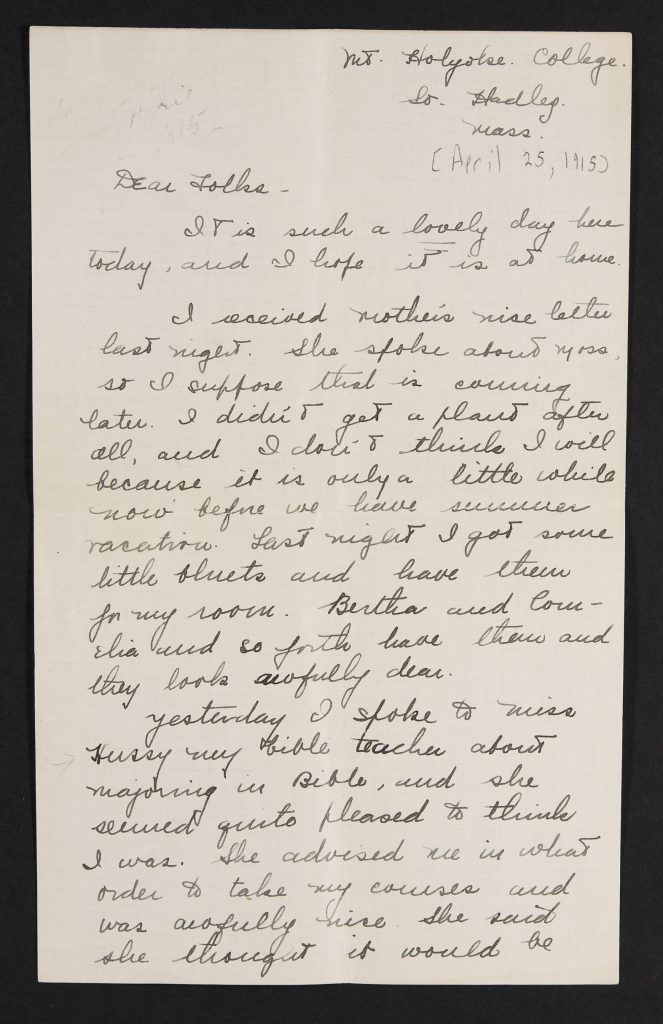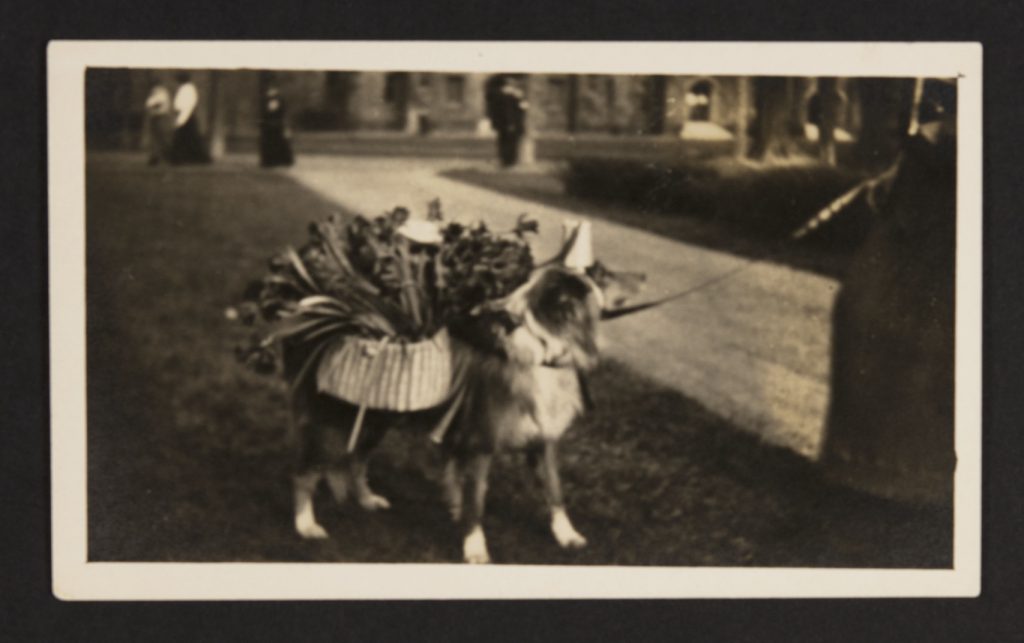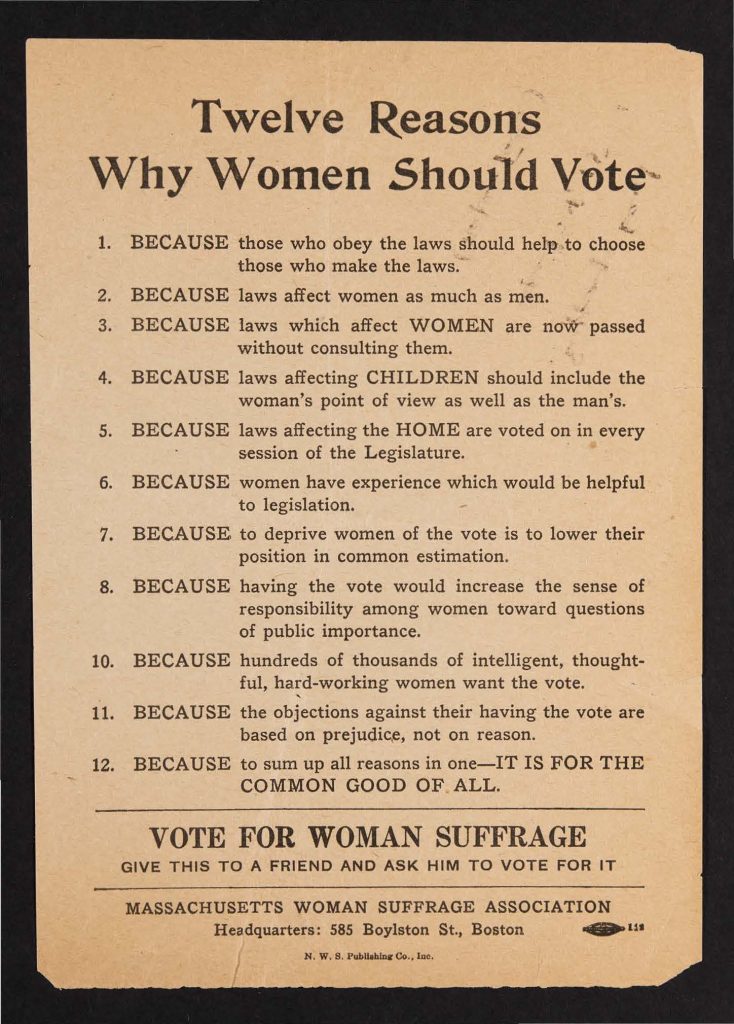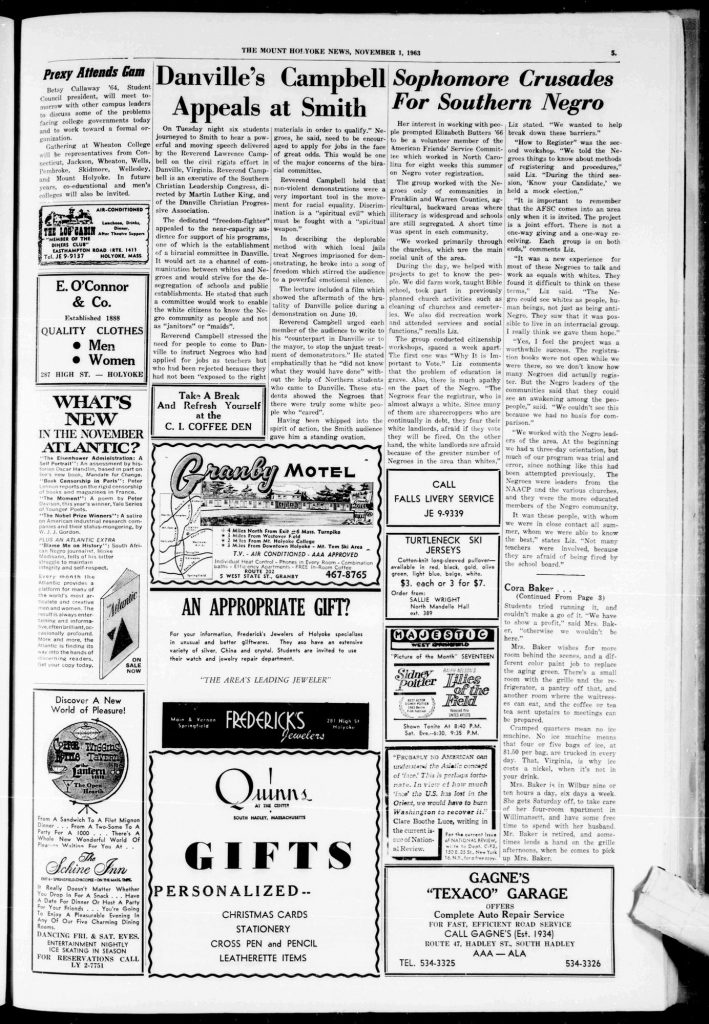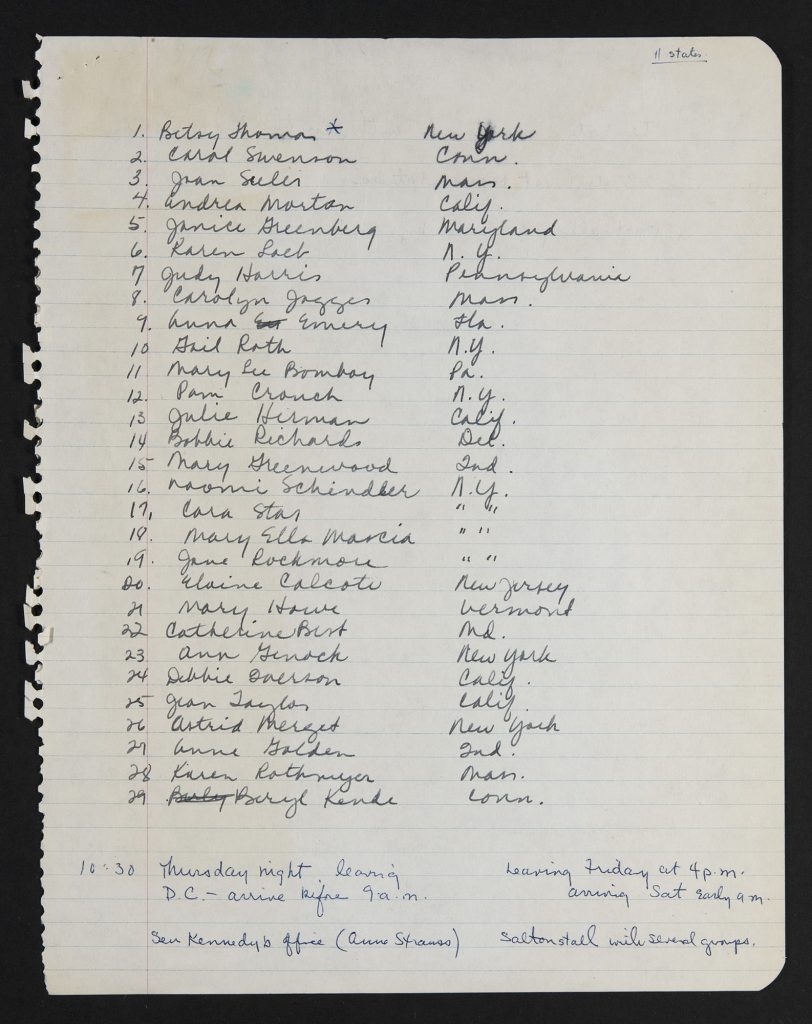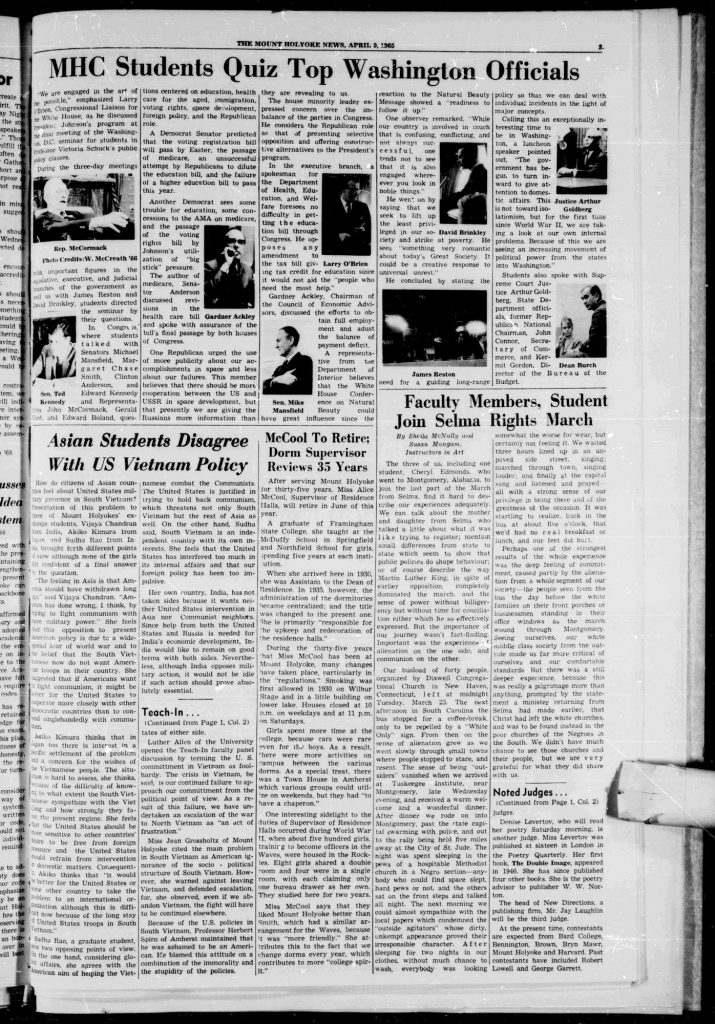Jennie Gilbert Gerome, Class of 1911, Letter to Mother, November 1908
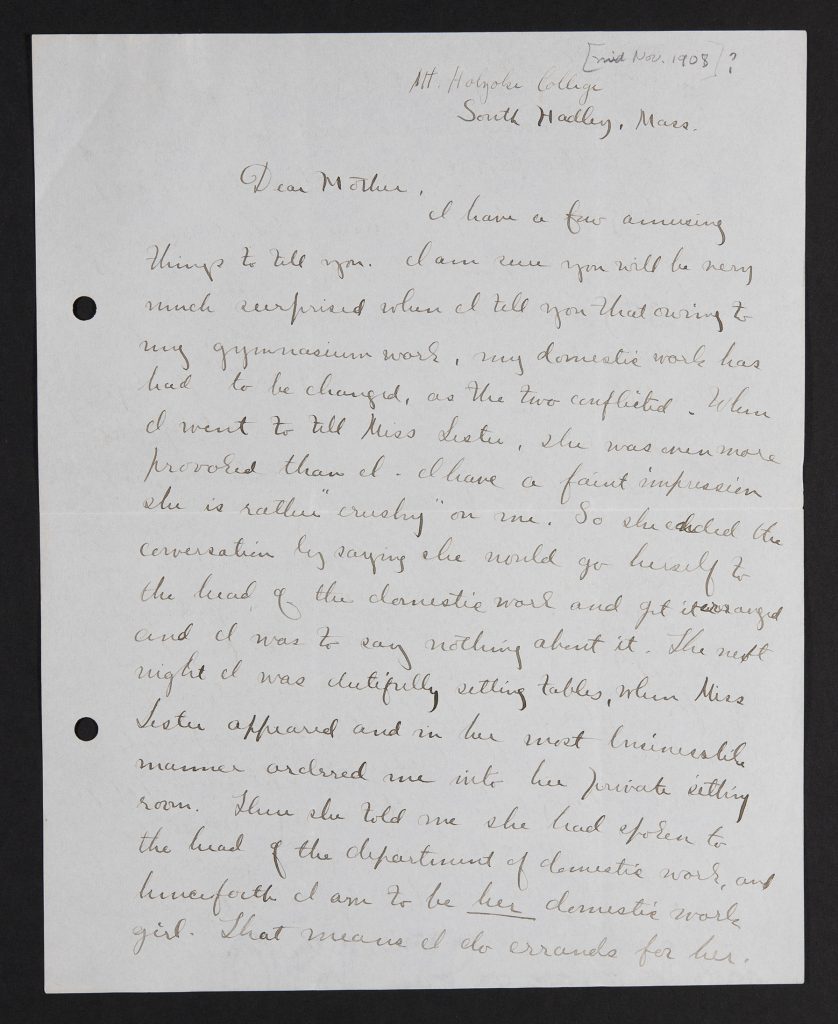
In a letter to her mother written mid-November, Jennie Gilbert Gerome, Class of 1911, gleefully describes leading a parade of her friends through campus dressed as suffragists. The group was clad in identical black gowns and gloves, white stockings, hats, glasses, and umbrellas — except Jennie, who wore red stockings and carried a scroll. Jennie led her seven “suffragettes” on a march to Mary Lyon (now Abbey) Chapel, with one companion clanging the dinner bell to arouse interest. Upon the landing of the Chapel steps, Jennie unfurled her scroll and read a speech on women’s suffrage to a crowd of faculty members and approximately half the student body. Jennie described the fantastical and seemingly impromptu event as “‘more fun than a goat.’”
Hortense Hubbard, Class of 1917, Letter to her parents, April 25, 1915
Although she was unwilling to align herself with the suffragist cause, Hortense Hubbard, Class of 1917, wrote home about Suffrage Day, which took place on April 24. She describes the event: “after chapel a girl dressed in white beat a drum and there were all sorts of signs around about suffrage. By the lawn between the Library and Mary Lyon chapel they had a table where they distributed papers and tried to get people to join the society up here.” She describes several events she did not participate in, including buying a flower from Jeannette Marks and her dog. By the fall, Hortense seems to have made up her mind. On October 10th, she writes home about a suffrage parade: “I don’t want to march. I guess I am an Anti anyway.”
Jeannette Marks’ dog on Suffrage Day, April 24, 1915
Jeannette Marks, English professor and partner of Mount Holyoke President Mary Woolley, was a strong supporter of the women’s rights movement. Marks and Woolley had several collies which were popular with students; one is shown here wearing a white hat and carrying baskets of daffodils around campus to be sold to raise money for the suffrage movement.
Pro-Suffrage Flyer, 1915
This flyer produced by the Massachusetts Woman Suffrage Association was handed out on Mount Holyoke’s campus during Suffrage Day on April 24. The progressive message of the flyer demonstrates the changing opinion regarding suffrage among students. In the early 1910s, the campus was relatively conservative in regards to women’s rights. By the mid-1910s, both faculty and students started changing their opinions on public affairs, specifically suffrage.
Interview in the Mount Holyoke News, November 1, 1963
During the summer of 1963, Elizabeth Butters, Class of 1966, spent eight weeks in rural North Carolina working in a voter education program organized by the American Friends Service Committee. Upon her return, she was interviewed by the school newspaper about her experience. While the author of the article describes the people of the area as being “apathetic,” Liz highlights the fear of economic repercussions that prevented many Black citizens from exercising their right to vote. Although she is the only student spotlighted in this article, there are records of other Mount Holyoke students travelling to the South and participating in similar initiatives during this period of Civil Rights activism.
List of Students from the March on Washington, 1963
This list shows the names of the 29 students from Mount Holyoke who went to the March on Washington in August of 1963. Over 250,000 people marched to protest the inequalities faced by African Americans. The march was influential in the passing of both the Civil Rights Act of 1964 and the Voting Rights Act of 1965. These acts outlawed discrimination based on race, color, sex, religion, and national origin and abolished the literacy tests and poll taxes that were frequently used to bar African Americans from voting.
Voter Registration Program, April 9, 1965
Two art professors, Sheila McNally and Susan Mangam, and one student, Cheryl Edmonds, Class of 1967, joined the civil rights protesters who marched from Selma to Montgomery in 1965. In this article from the Mount Holyoke News, they describe their experience traveling to Alabama by bus, sleeping in the pews of a Methodist church, and marching to the capitol. In particular, they note how the experience allowed them to recognize their white, middle class identity and in doing so, were able to be more critical of themselves and their “comfortable standards.”
